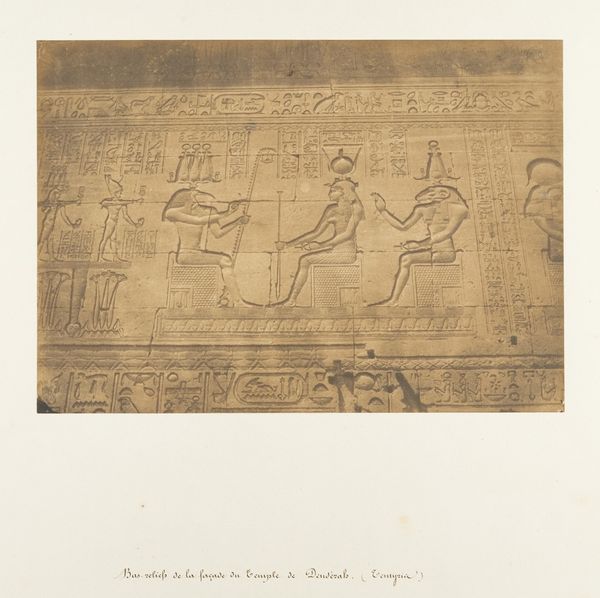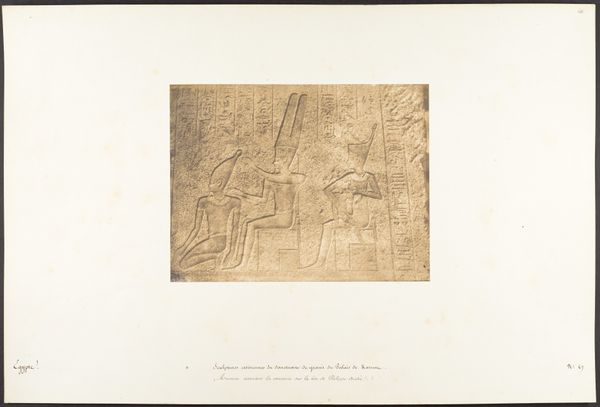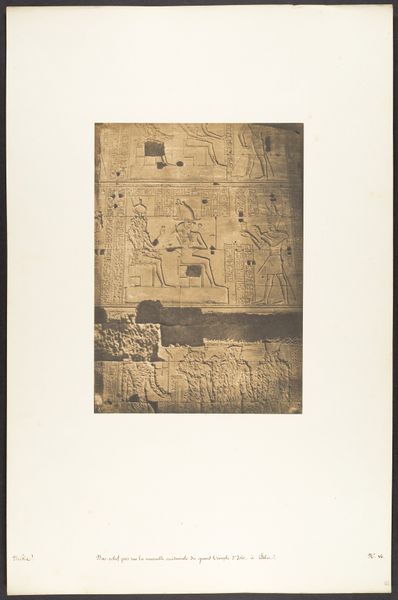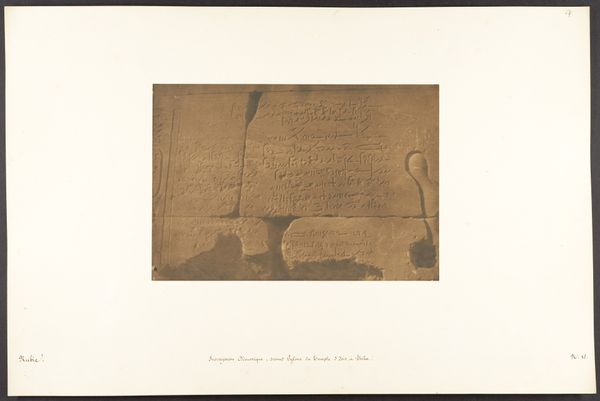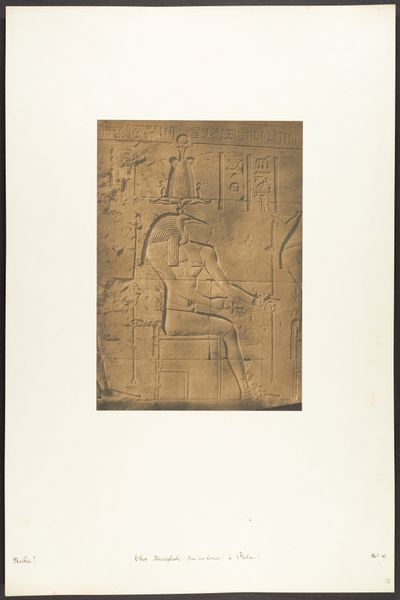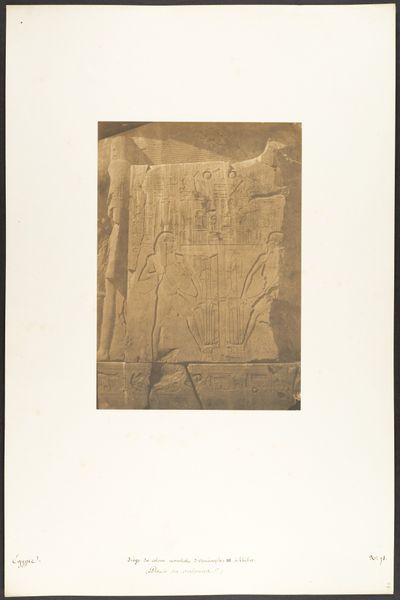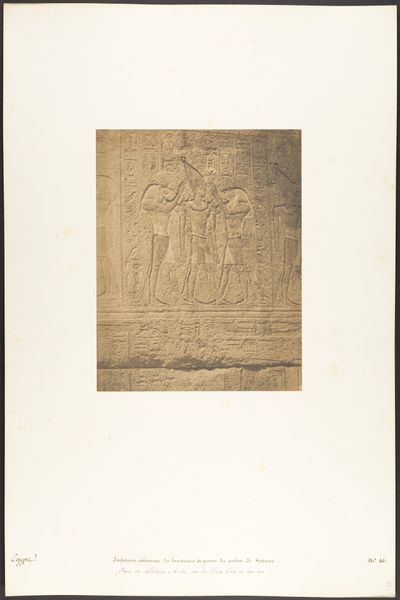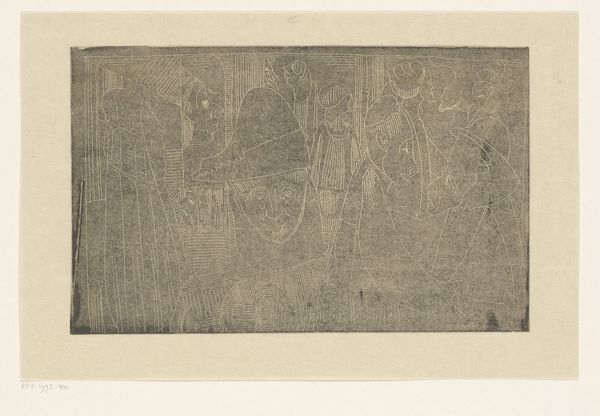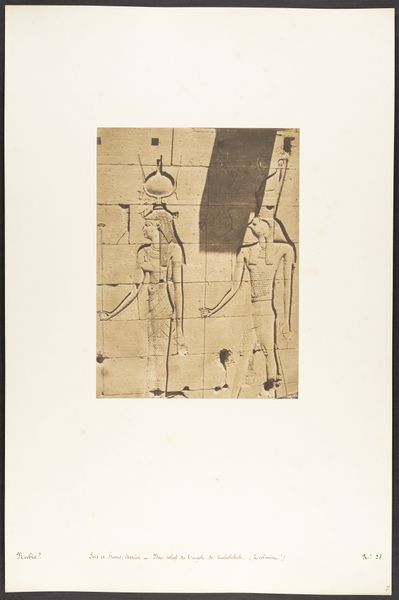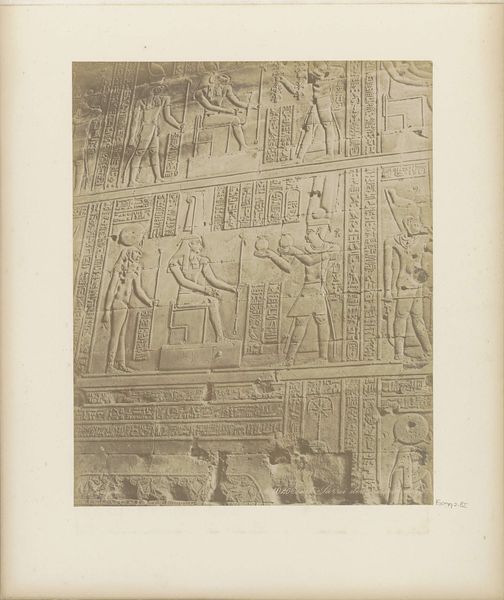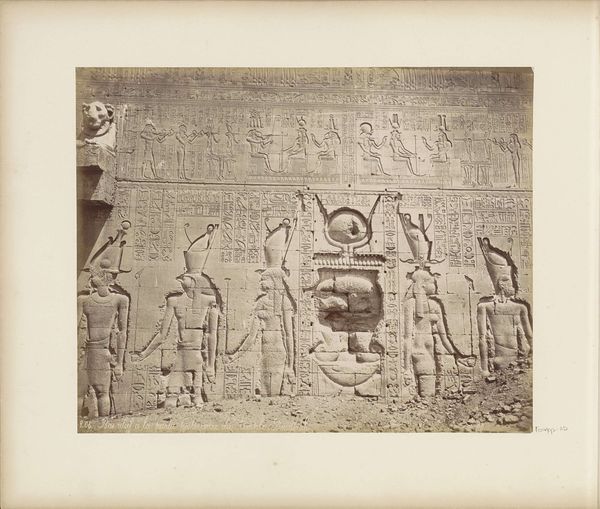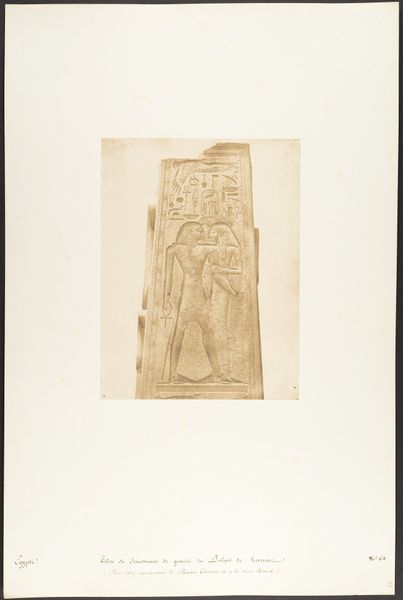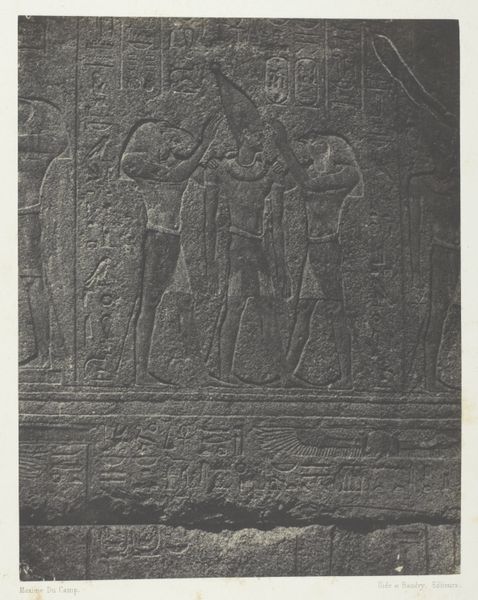
Sculptures sur la façade postérieure du grande Temple de Dendérah (Tentyris) 1849 - 1850
0:00
0:00
print, relief, photography, sculpture
# print
#
relief
#
landscape
#
ancient-egyptian-art
#
photography
#
ancient-mediterranean
#
sculpture
Dimensions: Image: 6 1/8 × 8 9/16 in. (15.5 × 21.8 cm) Mount: 12 5/16 × 18 11/16 in. (31.2 × 47.5 cm)
Copyright: Public Domain
Editor: So this is "Sculptures on the Rear Facade of the Great Temple of Dendera," taken between 1849 and 1850 by Maxime Du Camp. It’s a photograph of a relief, and what strikes me is the incredible skill it must have taken to create these carvings on such a massive scale. What are your thoughts when you see this work? Curator: Well, I immediately consider the extraction and preparation of the stone itself. Where did this material originate? How was it quarried, transported, and then manipulated by the sculptors? It wasn't just skill, but also a huge amount of coordinated labor, logistics and material infrastructure that enabled this image, this narrative to exist. Editor: That’s a really interesting way to look at it! I hadn't considered the practical side of actually sourcing the materials. Do the materials themselves carry cultural meaning here, beyond the labor involved? Curator: Absolutely. The type of stone chosen, its durability and color, would have been hugely symbolic. Consider its permanence. Think about the organization of labor required: were these enslaved people, skilled artisans, or a combination? These are the types of questions a materialist approach provokes. This image before us hides all of the underlying material relationships that made it possible. Editor: So, in a way, understanding the materials and processes helps us uncover the social structures of ancient Egypt? Curator: Precisely! The artistry isn’t just about the final aesthetic form, but about the entire network of production, from quarry to temple wall, labor to consumption. Understanding this provides a far richer historical perspective. Editor: I never thought about it that way, thank you. It definitely sheds new light on the relationship between ancient cultures and the artwork that we see today.
Comments
No comments
Be the first to comment and join the conversation on the ultimate creative platform.
